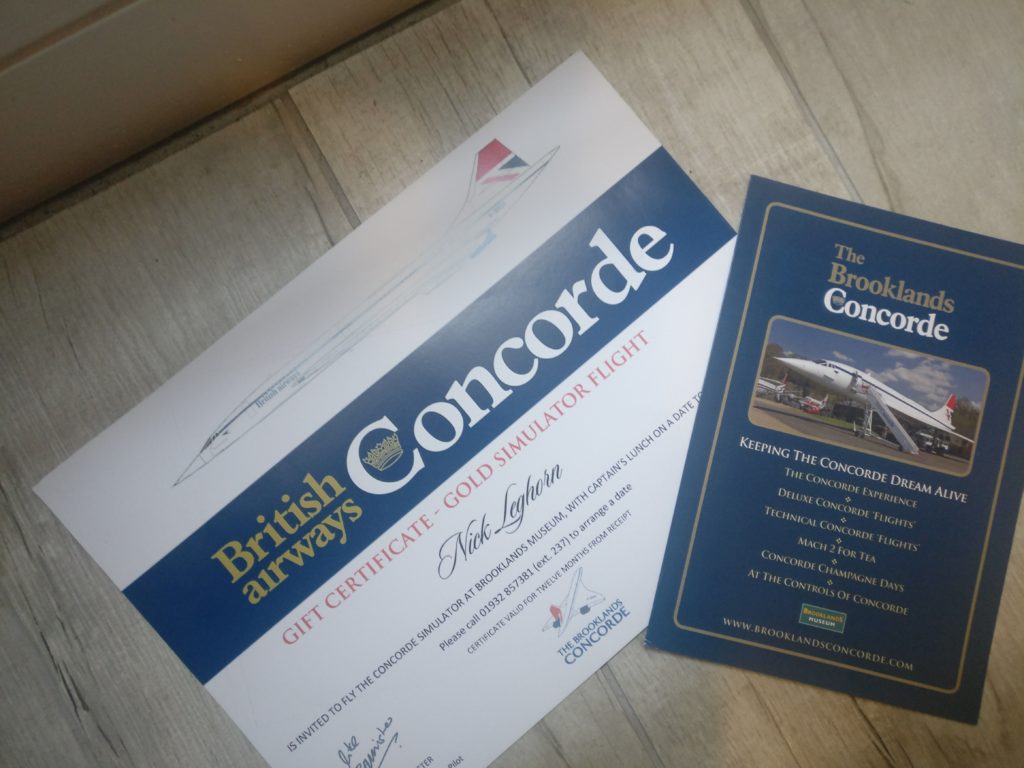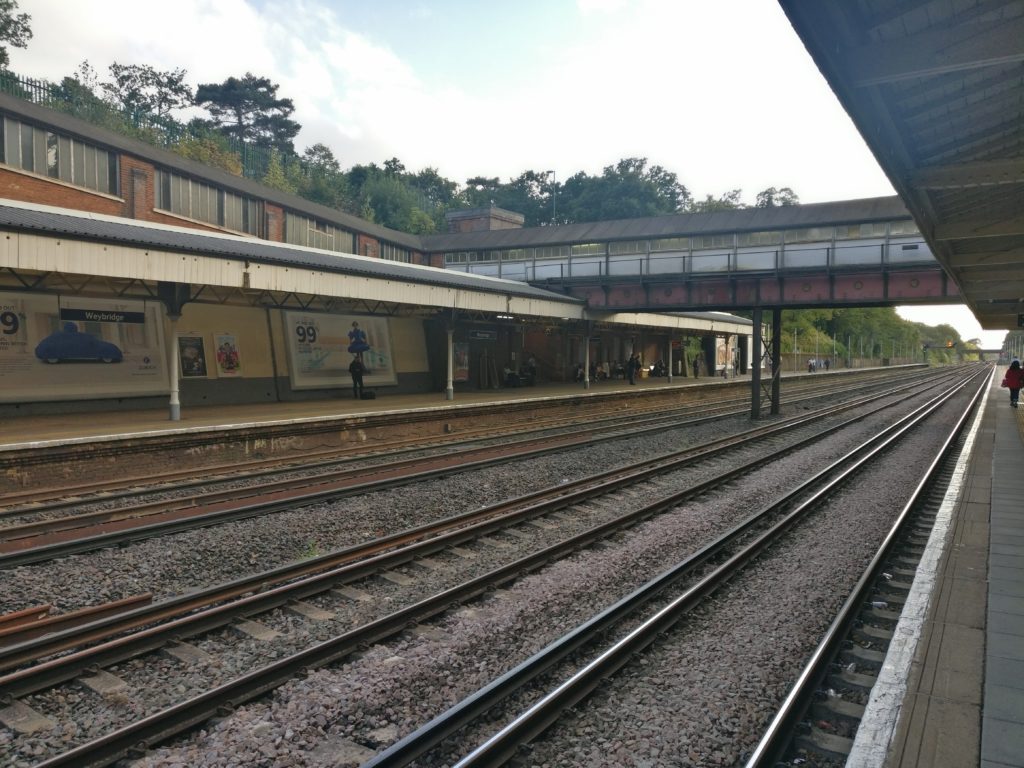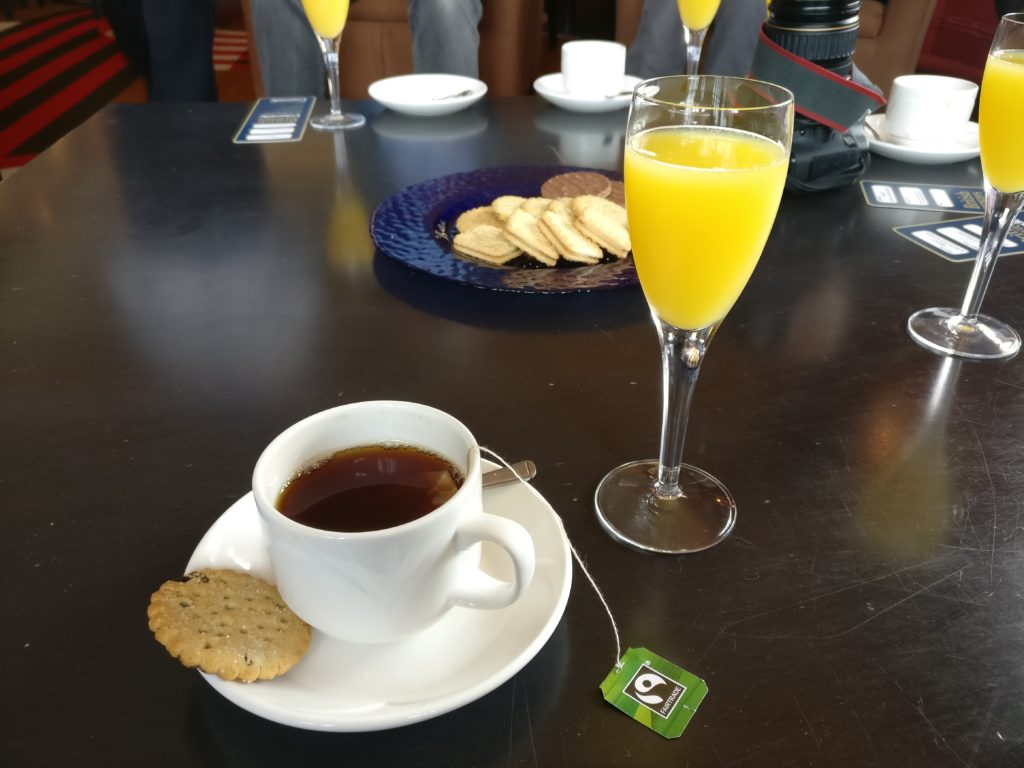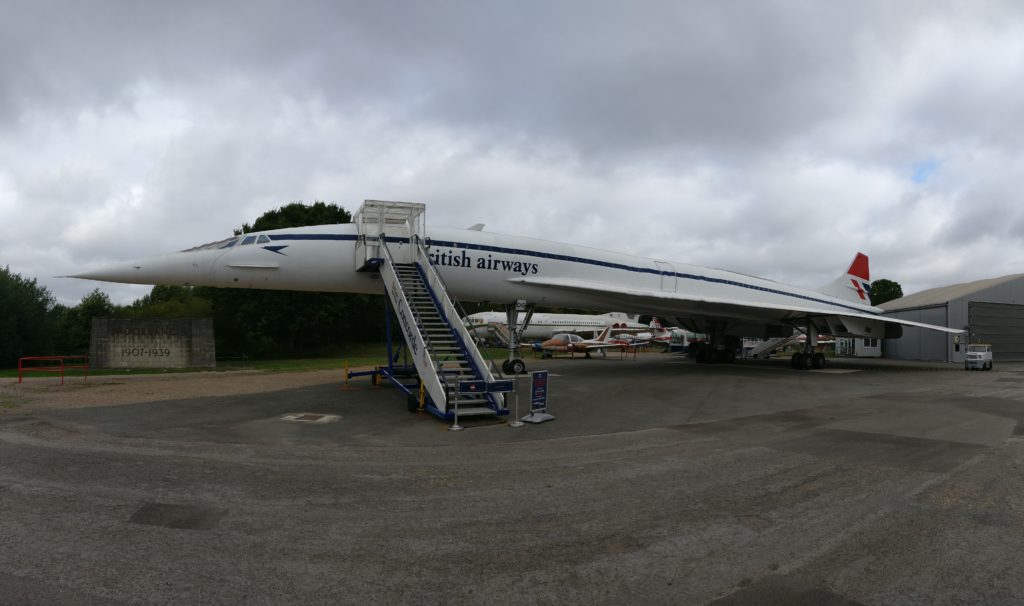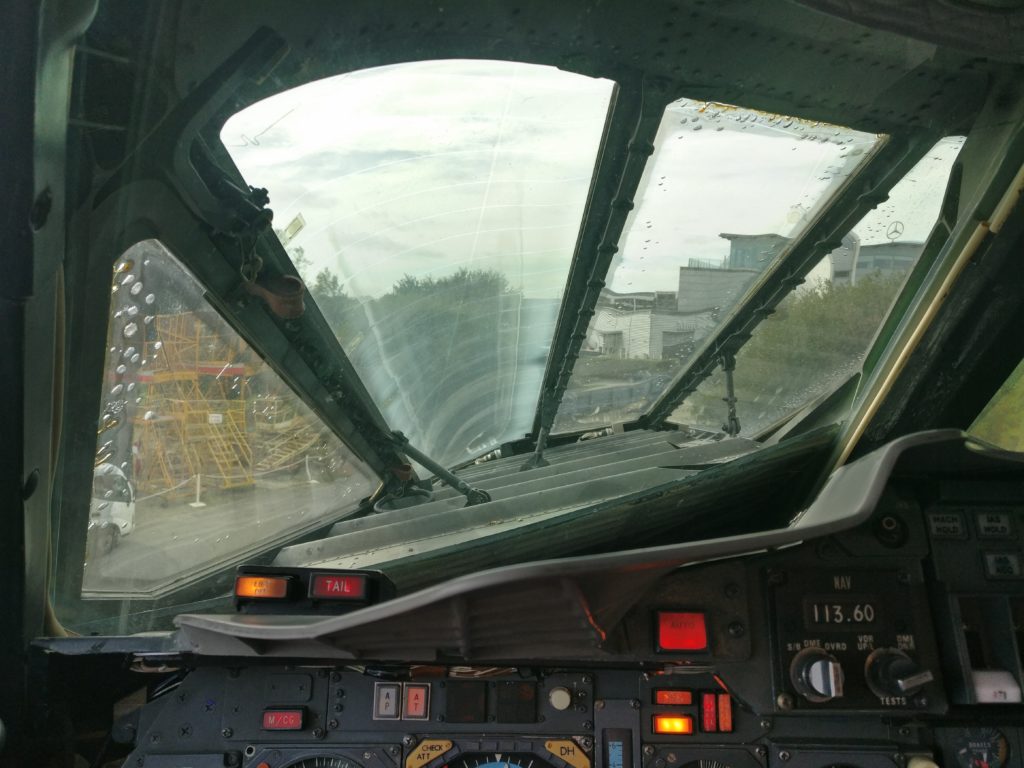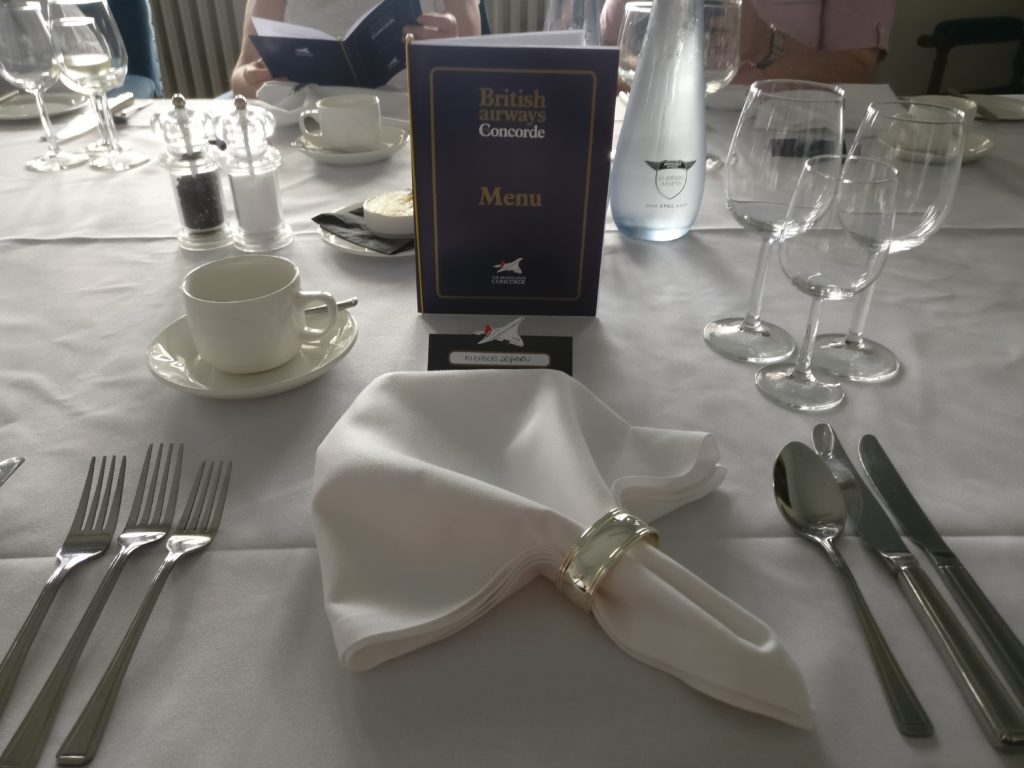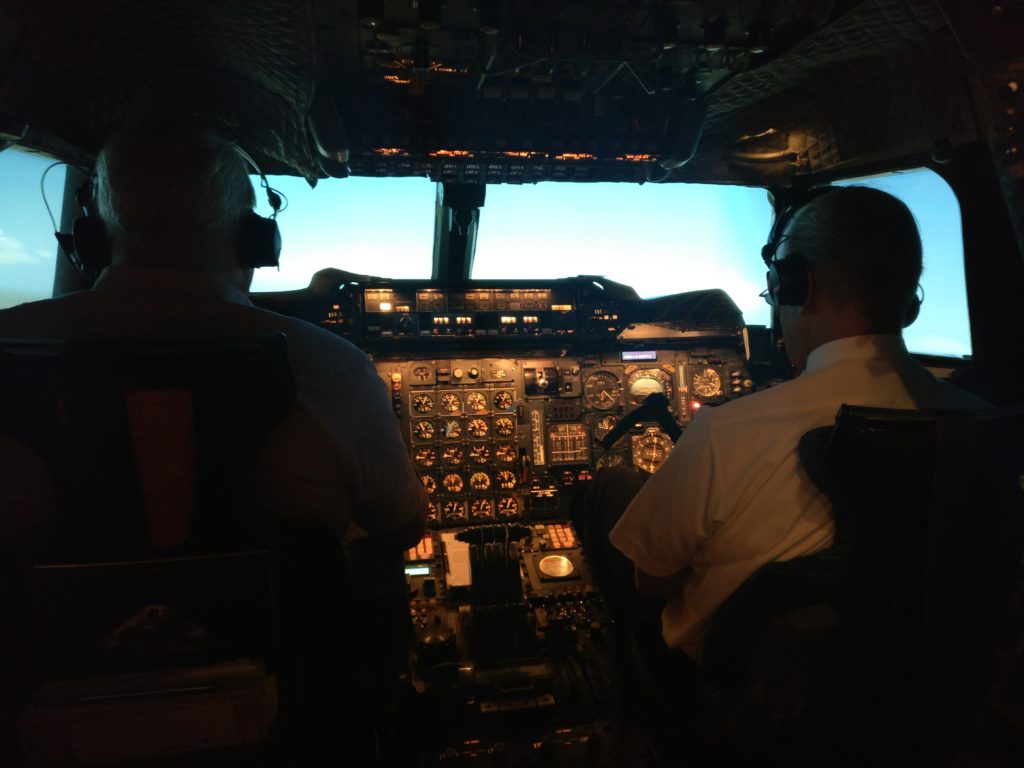
These days there are simulators for almost anything you could want to try your hand at flying. 737 and A320 simulators are a dime a dozen, with some simulators dedicated entirely to armchair pilots especially in Dubai and France for example. But there’s only one functioning Concorde simulator left in the world, and the museum has developed an entire program around giving people the opportunity to fly it alongside retired British Airways pilots.
My wife is amazing. She knew that I loved my time in the ATOP: Airline Training Orientation Program over with American Airlines flying their 737 simulator and she wanted to get me a similar simulator flight that I would never forget. After much searching she settled on the Concorde Experience with the Brooklands Museum outside London and made me the happiest aviation geek in the world.
Requirements and Registration
There are no special requirements to participate in the “Concorde Experience” necessarily, but mobility is a benefit. I don’t think there’s a wheelchair accessible entrance to the Concorde aircraft, only a set of stairs, but the simulator itself does have a ramp attached to it. Beyond that there’s no need for a pilot’s certificate or any prior training, although it would probably make the experience more enjoyable.
Just a quick note here: the simulator itself does not move or provide the sensation of flight, and I’ll get to that a bit more in a moment. As such you can’t use your time to count towards aeronautical currency. For example, I was able to use my ATOP 737 flight to count for my approach for the month to maintain my IFR currency, but in this case that’s not possible.
When registering for the experience you can purchase a gift voucher and give that as your “present” if needed (or just your present to yourself) and then contact the museum to schedule your actual date you will be participating. Groups are capped to four “pilots” (although you can bring a loved one as an “observer” for an additional charge) to make sure everyone has enough time in the simulator, and due to the availability of the crew there are a limited number of occasions per year when these events are possible. The calendar is published online so you can figure out when is a good time to go.
Once you are registered and confirmed all that’s left is to show up.
Getting There
The Brooklands Museum is located west of London on what used to be an airfield used by various manufacturers of British aircraft, primarily Vickers.
There are a number of ways to get there from London, the easiest probably being getting a cab or an Uber ride. I decided on the morning of the event to hop a train from Waterloo station to the Waybridge station and walk the rest of the way there. It worked, but there are definitely better options. FYI, walking from the train station to the museum you should probably allow yourself about 30 minutes.
Check In and The Museum
When I confirmed the date for my Concorde Experience the Brooklands Museum provided an itinerary that listed an arrival and check-in time of 10:30 AM. The schedule was due to last all day, right up until about 30 minutes bef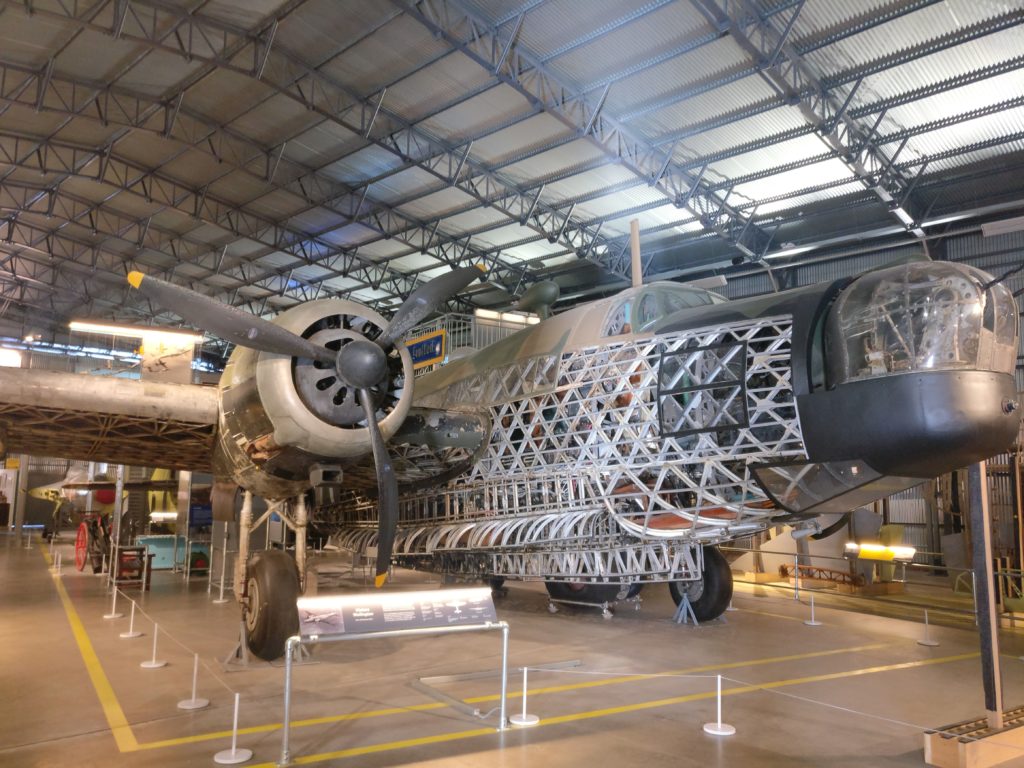 ore the museum closed, but that turned out to be a bit optimistic. In reality you’ll have about 30 minutes prior to check-in to wander the museum and look at everything else before the rest of your day will be taken up with the experience.
ore the museum closed, but that turned out to be a bit optimistic. In reality you’ll have about 30 minutes prior to check-in to wander the museum and look at everything else before the rest of your day will be taken up with the experience.
My recommendation is to make this a two day trip, at a minimum. There are so many interesting aircraft at the museum, most of which are open and staffed by volunteers who will give you an excellent history lesson about the aircraft and let you crawl around inside some areas to take a look. And that’s not even scratching the surface of the motor racing areas of the museum that I never had a chance to see. You can (and should) use the 30 minutes between the opening of the museum and check-in time to wander around and see what else is there, but be aware that it’s not nearly enough time.
Coffee and Drinks
Once everyone has arrived (which, being morning near London, may take some time) everyone is given a quick tour of the main building and then brought to the member’s bar for tea and “Buck’s Fizz” (champagne and orange juice) with the crew for the day.
While the simulator and aircraft itself was really cool, without a doubt the best thing about the entire experience was the staff. Leading the day was a pair of British Airways pilots who had actually flown the Concorde while in service, in addition to a member of staff who happened to be part of the ground crew working on the airplane. Their knowledge about the aircraft, its history, and their stories about their life in aviation were worth the price of admission alone.
Over tea and some light alcohol the staff gave a good overview of the Brooklands location and its history, then a general discussion of the Concorde and their experiences with it. Once everyone had finished their tea it was time to head out to the aircraft.
The “Concorde Experience” in G-BBDG
Out in the parking lot behind the museum is Concorde G-BBDG, the first British manufactured Concorde that was used in the testing and certification of the airframe. Although it was never used in revenue service, the aircraft was used as a source for spare parts for other aircraft in the British Airways fleet and a test bed for some enhancements like reinforced cockpit doors.
On the one hand, it’s slightly sad knowing that this isn’t an aircraft that has any chance of flying every again (thanks in part to the need to slice it up to move it here in the first place) but it is a complete Concorde and that’s pretty cool.
The Brooklands Concorde is displayed with some quirks, such as a missing engine to highlight the engine compartment components and the Ram Air Turbine deployed, but generally it’s a clean looking bird that looks like it’s ready for a load of fuel and a destination.
The “Concorde Experience Flight” is described as a simulated take-off in the Concorde aircraft, and to their credit they try. You sit in authentic Concorde seats (which I appreciated to get a feel for what it would be like as a passenger) and watch a video presentation on the aircraft which includes a section where the airplane “takes off” as your seats vibrate a little bit and the airspeed indicator on the wall starts ticking upwards.
Honestly, I could have lived without the Magic Fingers experience. Without the acceleration sucking you into the seat you’re not getting the whole picture, and it seems more like an expensive gimmick than anything else.
After the presentation is the real highlight of the segment: visiting the Concorde cockpit. Where most tours would let you look, your BA pilots escort you past the barrier and pull out the captain’s chair letting you sit and feel what it would be like as a pilot in a real Concorde aircraft.
At this point I was giddy as a schoolgirl. Despite the un-airworthyness of the aircraft the ground power was still hooked up to the avionics bus and all of the dials and lights were illuminated as if the aircraft was running on external power just before the APU was lit. I doubt the gyros in the instruments have turned in the last couple decades but for a moment you almost feel as if you can just flip the APU start and take her for a spin.
All too soon your time is up and it’s back to the member’s bar for lunch.
Lunch
Up until this point each of the segments has had a defined structure, a stated goal and a general script. The lunch was the first really unstructured segment of the day and allowed the guests and pilots to know each other better. Personally, I really appreciated the insight into the life of an airline pilot from that era and what they were doing now that they were retired.
Lunch itself was interesting. They attempted to re-create a lunch menu from a specific Concorde flight, including the wine and dessert.
If I can digress for just a moment here, while I appreciate the alcoholic drinks during the day I did find it a little odd that we were loading up on the booze before flying an airplane — albeit a virtual one. I’ve had the “8 hours bottle to throttle” beaten into my head so many times that it felt a little strange drinking literally minutes before taking the controls. Then again, it’s not like this was specifically for any kind of proficiency. Even if the simulator were a full motion FAA approved training device the procedures and controls were for an aircraft that will probably never fly again and have zero actual use.
Lunch may be my second favorite part of the day specifically for the unstructured conversations with the pilots. My favorite part was coming up: the simulator.
Flying the Simulator
Off in one of the out buildings is the Concorde simulator. Originally built by British Airlines to train their Concorde pilots, the simulator was moved to the Brooklands museum after the Concorde was retired.
The simulator had evolved as technology changed, moving from a glorified TV camera playing across a model airport to a fully computerized version with visuals projected on screens outside the cockpit windows, but when the simulator was moved to the museum it was done in the most expedient way possible: by slicing through the wiring harness running from the cockpit instruments to the computer. As a result volunteers for the Brooklands museum have spent the last few decades tracing each of those cables by hand, figuring out how the mechanisms work, and building a new computer interface to run the whole thing. They still aren’t done — when I was there they had just started getting some of the fuel transfer switches working on the engineer’s panel. The flight instruments and controls work fine, but some of the ancillary systems still aren’t functional in the computer model.
Once inside the simulator your pilots will inform you that you can fly from any airport you want, but you basically have four options for properly rendered and visually appealing flights: New York JFK, Hong Kong’s decommissioned Kai Tak, London Heathrow, and Sydney.
I couldn’t pass up the opportunity to do the checkerboard approach. Especially in a Concorde.
The pilots mentioned that it was their favorite as well, just challenging and visually appealing to keep it interesting for them as well as the guest.
In the simulator you have time for two choices, each of which takes approximately fifteen minutes. Sure you’re in the simulator for two hours, but only 30 minutes of that you are actually behind the controls. While you wait you can talk to the pilots some more, one of whom will be in the rear with you while the other helps the pilot flying.
In general the controls feel pretty good. The computer running the whole thing is a donated affair and was underpowered when it was installed, and there are some times when it needs a minute to think and the simulation will stutter briefly before returning to normal. The controls and dials themselves are pretty good and functional, the only exception being the attitude indicator and flight director which seems to update its position only once or twice a second versus continually as it would with a gyro. As a result it seems to “stutter” as it moves around and isn’t the most accurate instrument.
Don’t worry about it, though. Just look outside and enjoy the experience.
At the end of the flight you get a signed certificate from the pilots and are sent on your merry way.
Summary
There’s no doubt that this experience is worthwhile for any aviation enthusiast. It has been tweaked and refined so that even the least knowledgeable person off the street can enjoy it as much as someone who has studied the Concorde operating manual from cover to cover (as I did in preparation, like a nerd), but that said I would definitely do it again. Hopefully with different pilots — not that the ones accompanying me were bad, but I would just like to meet more than two of them and get a broader understanding of the experience.
Register here: Brooklands Concorde Simulator Experience
